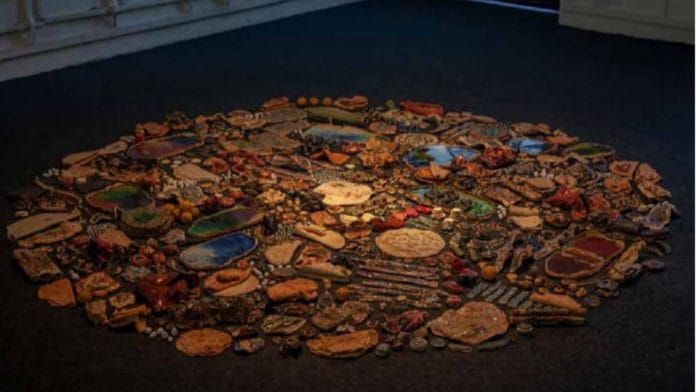Bengaluru: Famine can change your genes. When Anna Dumitriu, a visual artist from England, found out that the 1945 Dutch famine had caused epigenetic changes in children due to intense starvation, she decided to tell the story through art. Her work, ‘Manna’, will be on display as part of the Science Gallery Bengaluru’s new exhibition, Calorie.
“The scars on their physical bodies at a microscopic level are being passed down through generations. The (art) piece also alludes to the idea (of) mental trauma as well as physical trauma,” Dumitriu told The Print.
Her work, like the rest of the exhibits in Calorie at the Science Gallery, explores “humanity’s intimate yet fraught relationship with food”.
“When you create an exhibition-like format, what you’re aiming for is to influence what happens in the mind of the visitor in between two exhibits. What thought impulse grows in their mind when they see one thing, and then they move to the other. That’s the moment you want to capture,” Jahnavi Phalkey, director of SGB, told ThePrint.
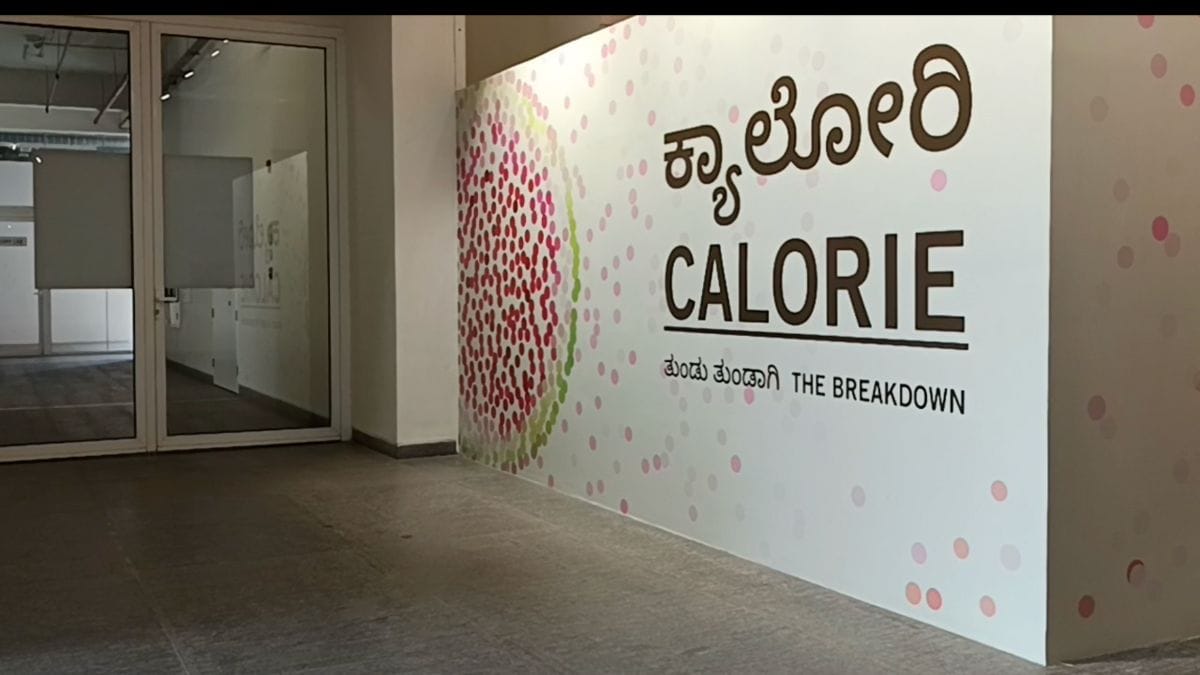
Food for thought
Dumitriu’s artwork is bold and raw. Tiny foetuses made by using food products such as millets, which were a staple during famine, sit around a large 3D printed model of a tulip, a flower that was part of the diet in the Netherlands during the 1945 famine.
The model was 3D printed by Alex May, a digital artist who has collaborated with Dumitriu on several projects.
“(The famine story) is just fascinating. And to be able to sort of present it in this artistic way, to reach different audiences, to have the opportunity to show it at Science Gallery Bengaluru, it’s fantastic,” said May.
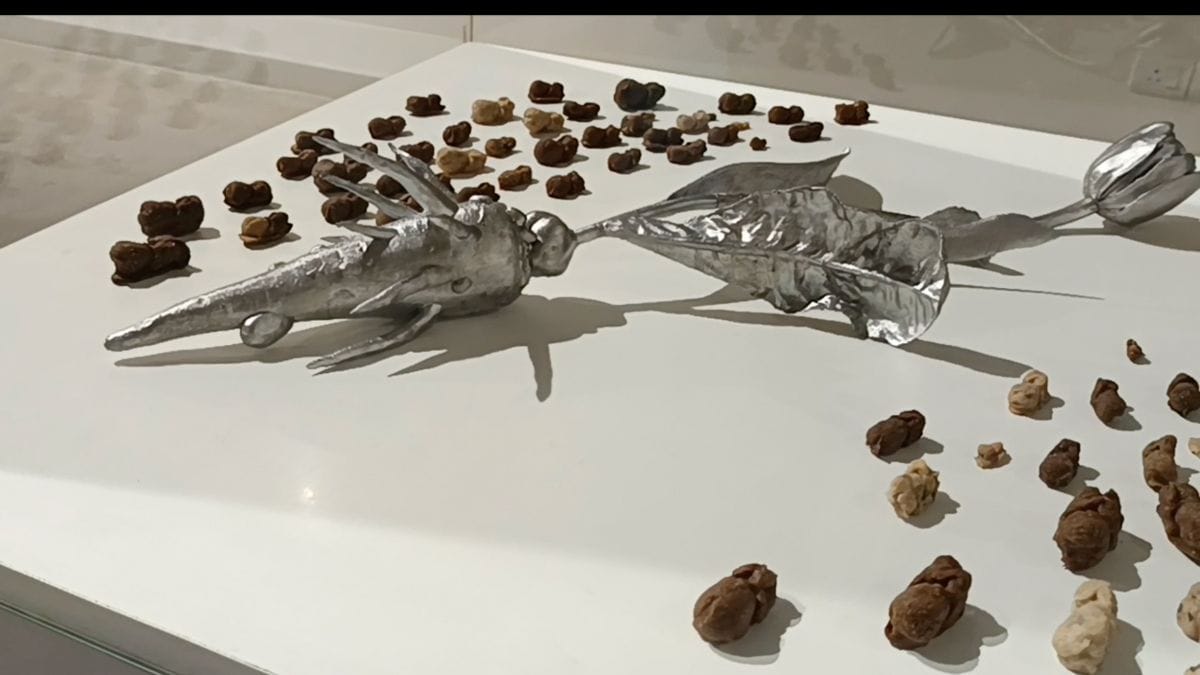
The intention is to open dialogues around the memories that food can bring in. In one of the workshops at the Science Gallery, where the artists get to interact with the mediators for them to familiarise the work, Dumitriu recalled how a participant was disturbed by Partition.
“That’s what post-memory is. It’s when you don’t experience it, but you carry it through generations,” she said.
Next to Manna sits another artwork, Vulnerable Guardians. It’s an installation of a variety of seeds stuck on a wall. The exhibit’s aim is to make visitors aware of the diversity of crop seeds we had in the past.
At SGB, ‘mediators’ are the interlocutors guiding viewers as they make their way from one exhibit to another.
“I don’t think our lives give us enough time to go back and research on our roots or paths, unless you’re from a farming family, or you’re a botany student, agriculture student. In a public space, it’s really nice that visitors get to know it,” said S. Thejaswini, a mediator who has a background in zoology.
Through Thejaswini’s perspective, the gallery opens up a conversational experience around every exhibit displayed and that is where having a mediator for a walkthrough helps.
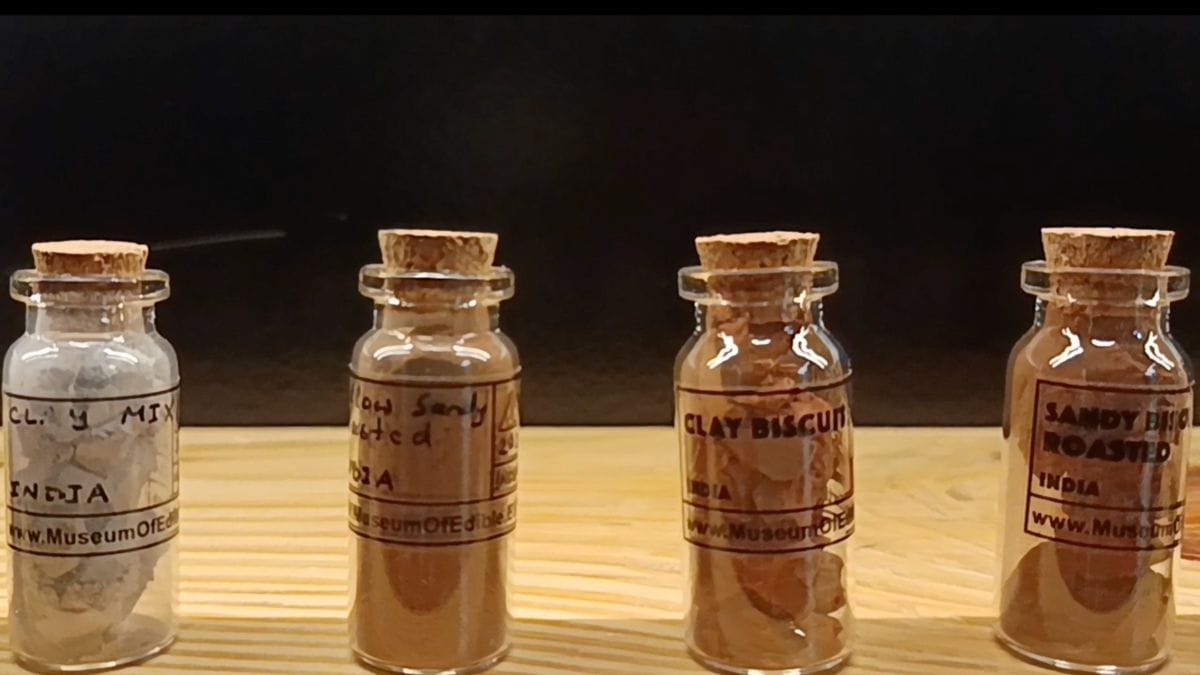
Dining: Who sits where?
A few metres from Manna and Vulnerable Guardians is a dining table laid out with glasses and plates, each painted with pictures of rotis.
Headphones placed next to each plate allow visitors to listen to conversations around how gender plays a role in the kitchen. Through this exhibit called What’s for Dinner artists and and dancers Shreeya Agarwal and Kamakshi Saxena explore how patriarchy shapes dining, using recorded conversations with men and women.
“People will come in with their own views and they may leave with the same views. But the next time that they’re doing something, perhaps they will pause to think because of what they’ve seen here,” said Sai Motupali Nair, another mediator.
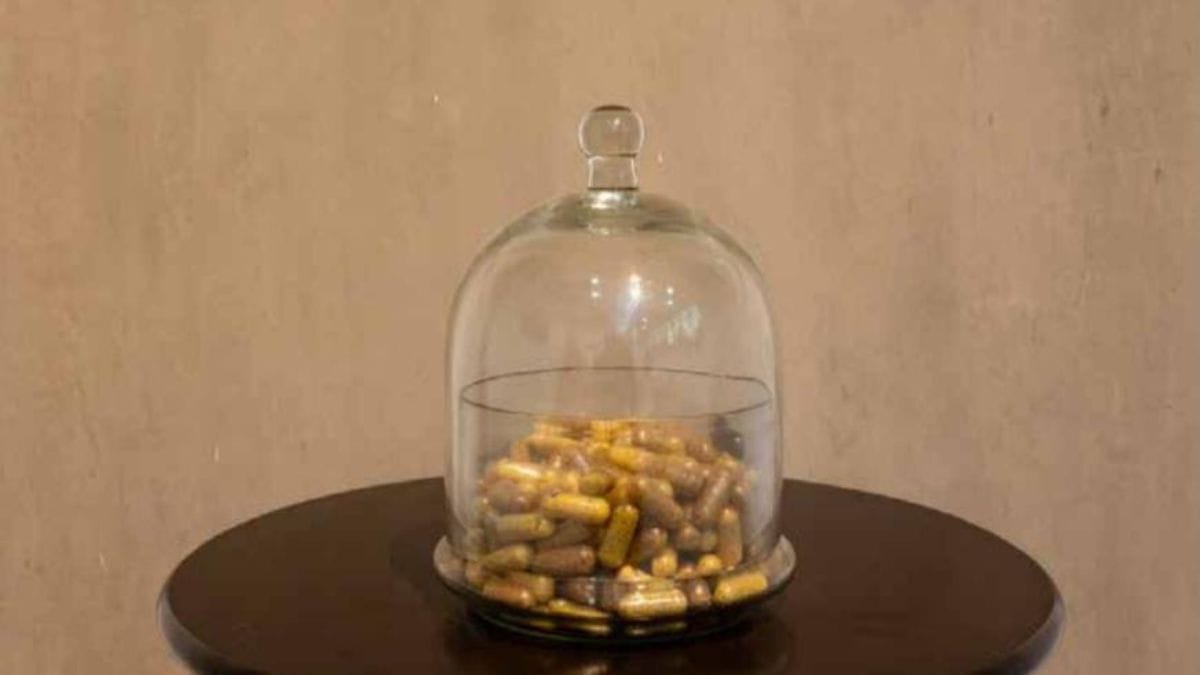
Also read: A Bengali scholar took last major Indian Buddhist text to Tibet. It changed the religion
Experience beyond prescriptions
In another corner of the gallery, product and interaction designer Vinay Venkataraman is busy setting up his Carbivore, an exhibit he designed with Priya Mani, a designer and cultural researcher.
It explores our relationship with carbohydrates in the diet and explains the nutritional values of each food variety.
The installation is a table laden with different bowls of carbohydrate-rich food, like rice.
“We have other carbohydrates, including wheat and millet and even potatoes, which are not often thought about as a starch source,” said Venkataraman.
As the visitor chooses a particular ingredient and places it at the centre of the table, the projectors from above display visuals of the chosen ingredient. The visuals have tiny snippets of nutritional information on the selected ingredient.
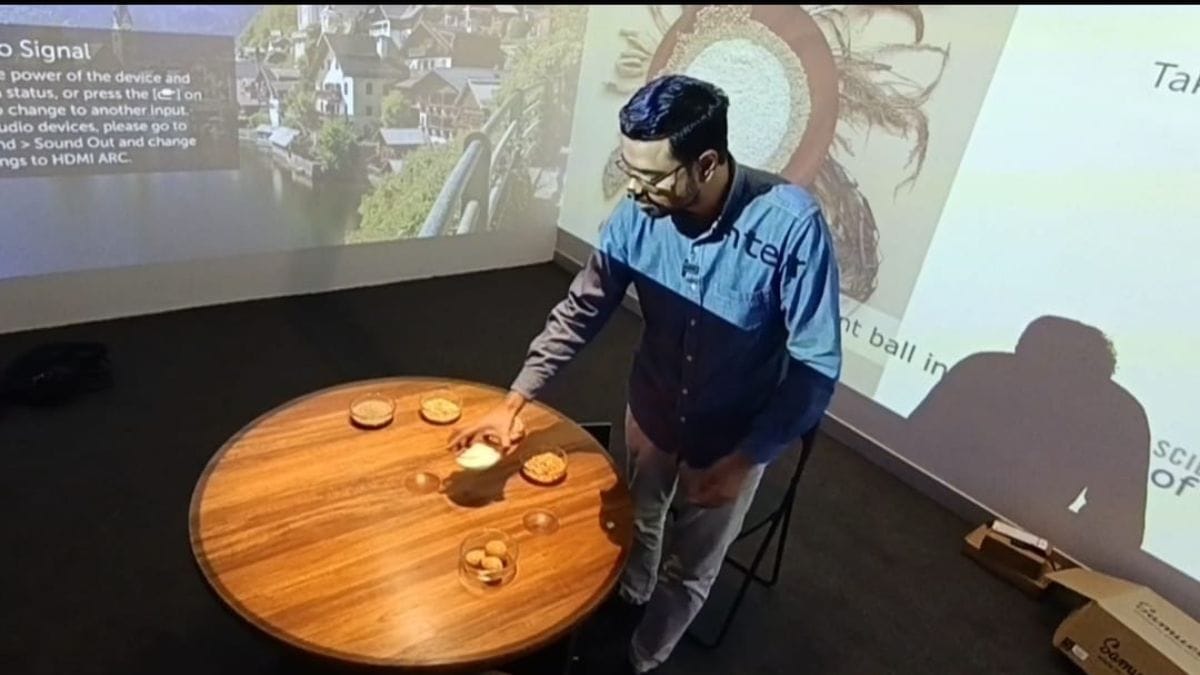
In Calorie, the exhibits are an intersection of food, history, politics and caste.
“What we want to do at the gallery is to allow us, as a community and interested citizenry, to pause and pick an object of scientific inquiry. Calorie is an object of scientific inquiry. We are not directly entering the problem of malnutrition (but broadly) bringing the culture together with the research-based inquiry that happens behind the walls in a laboratory,” said Phalkey.
The exhibition will officially launch on 9 August and is open to visitors for free.
(Edited by Ratan Priya)



